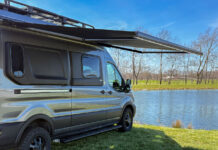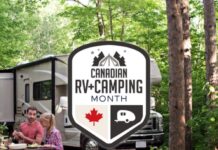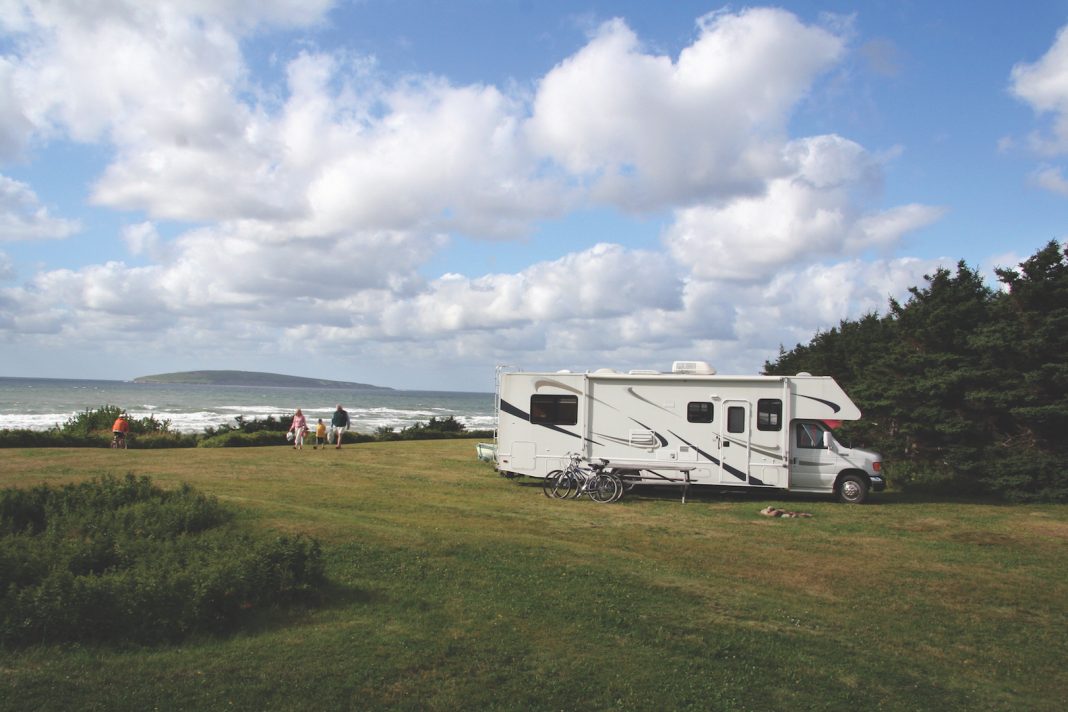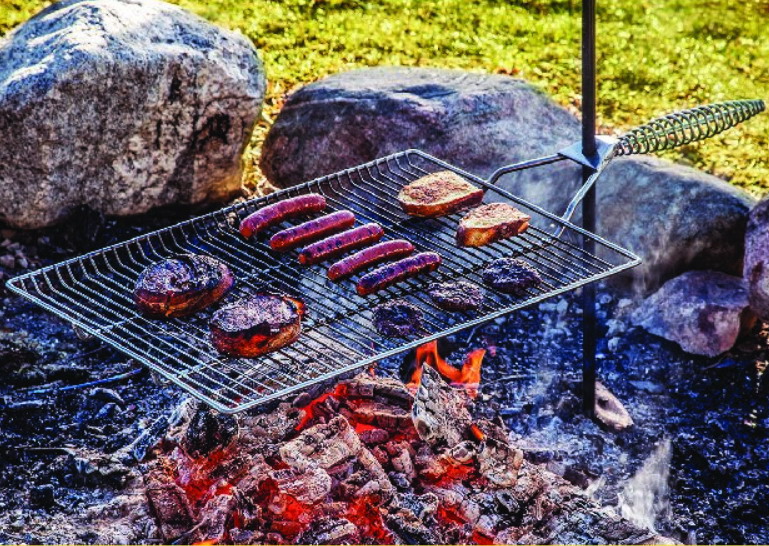Whether you travel thousands of miles, or take a leisurely two-hour drive to the countryside, matching your destination campsite to the needs of your family is the key to an enjoyable RV vacation.
Over the years, we have learned from experience that there are always some campsites that are more suitable for various types and sizes of RV’s… and if you camp in a tent, the guidelines are even more important – here are some valuable campsite tips from our RV Lifestyle Road Test Teams.
Reserve the campsite ahead
There are more than 4,000 campgrounds in Canada, and more than 400,000 sites to park your RV, but on a holiday weekend, you can count on one mathematical certainty – every single spot in the park of your choice will be filled. Guaranteed.
You have to plan at least 60 days in advance to be reasonably sure of getting a nice campsite… procrastinate and you may still be able to find a spot, but your selection could be limited. Check our directory listing for the town closest to your destination, and contact the campgrounds to find the ideal place to park your RV.
If you travel with kids, and they prefer to have their privacy, you can always take a tent along – ask the campground operator if there is a place where your kids can pitch a tent, either on the campsite, or in a nearby spot.
You will be asked to provide information on the type of vehicle you will be parking in the campsite – the length, width, and the special requirements. Keep in kind that some of the larger RV’s require 50-amp electrical service and that may not be widely available… If you have slide-outs on both sides of the vehicle, you may need a larger spot. If you can travel fully self-contained, and do not have to empty your holding tanks for a few days at a time, you may be able to take advantage of partially serviced sites if the fully serviced spots are occupied.
Stay high and dry at your campsite
We have all learned from experience that the best campsite is situated at a point in the campground that will remain “high and dry” in the event of a summer rainstorm. There is nothing worse than waking up in the middle of the sixth “great lake” – take a look at the campsite before you set up your gear, and if it appears to be “down in the valley”, ask for a different location!
Watch the trees on the campsite!
Everyone likes to have a nicely wooded site, where the natural shade from a hundred-year-old maple tree provides a perfect escape from the summer sun. Parking an RV in a wooded site requires a bit of planning, as you have to consider a number of factors: will the site be level; can your roof air conditioner and TV antenna clear the low-lying tree limbs; will you be able to extend your awnings and slide-outs without hitting a tree; will you have enough room to access your exterior storage compartments… sometimes the most obvious obstacles go unnoticed – we parked in a site one summer where a massive oak provided lovely shade, but one of the roots tripped every visitor that dropped by our RV! After a few days, we reluctantly moved one site away from the tree, and saved a small fortune on Band-Aids.
Level and Stabilize the RV
You don’t always have the luxury of parking in a fully leveled site, so you should be prepared to level and stabilize the RV by using pieces of 2” x 10” lumber, cut into two-foot lengths, and placed where you can park your wheels on top of the wood. It usually takes only one or two of these boards to make a big difference in the level of the RV. Why level the RV? To help your water system drain properly; to optimize the performance of your refrigerator and air conditioner; and to prevent your guests from feeling seasick when they walk into the vehicle.
The technique for leveling an RV is a one-time exercise in precision parking. Start in a paved parking lot that you know to be as close to perfectly level as possible. Use a bubble level on the frame of the vehicle to establish true level, and then take a few more bubble levels and locate spots throughout the RV where you can check the level of the vehicle. The bottom shelf of the refrigerator is a key area, and the bathroom vanity is another good spot. If these areas are level, chances are excellent that the entire RV is ready to be stabilized. If they are not level, adjust the RV by using the stabilizing jacks to fine-tune the height of the four corners of the vehicle.
Once you have established the true level for the RV, you will be able to prep the unit for quick leveling every time you park. You will be using your scissor jacks or built-in leveling jacks to stabilize the RV. Stick a bubble level at each corner of the vehicle, right above the adjustment position for the stabilizing jacks. Put a piece of 2” x 10” board on the ground, where the stabilizing jack will touch down, to keep the RV weight from pushing the stabilizing jack into the soft ground or pavement, and lower the jacks to the point where the vehicle does not move when your family walks around inside.
Awning Awareness
On the very first RV trip we took, we learned a valuable lesson about awnings. Our RV dealer had advised us that the awning should be tied-down to protect against wind, and we had some rope and long tent spikes to do the deed. I carefully tapped the pegs into the ground, which seemed to have some strange depressions here and there… in the middle of the night, I awoke to the sound of running water – no, make that an eruption of “old faithful” proportions… I had inadvertently stepped on and broken one of the park’s in-ground sprinkler heads!
Picture me in my PJ’s, trying in vain to turn off the water hookup, getting more soaked by the minute… before I could accomplish anything, geysers started shooting water all over the campground – what had I done? It took a few minutes for reality to soak in… there was no major damage, just an automatic sprinkler system that was triggered to go off every night at 3:00 a.m.
Pick a “Pull-Through” site…
Even the most experienced RV drivers prefer a campsite that you can simply drive into when you arrive at the campground, and drive out of at the end of your stay. These “pull through” sites are usually the first to go, so be sure to ask the campground manager to reserve one for you when you call ahead to book your stay.
When you arrive at a “pull through” site, take note of the placement of the water, sewer, and electrical hook-ups, and position the RV so that your entrance door and awning are lined-up with the “patio” area. You will want to park within reach of your hook-up hoses and cables, and you should always carry extensions as well as adapters for the various components.
Parking at Night
Despite the best made plans, we always seem to arrive at our destination after dark. Parking your RV is always a challenge after sunset, and this can be complicated even more if you arrive after 10 p.m., when some of your neighbours may be asleep.
We sometimes ask the campground operator if we can stay in a transient site for the first night, and move the RV in the morning, to avoid disturbing the other campers.
If we do park the RV after dark, we use a system that uses small flashlight looped over the electric and water hookups, and placed near the sewer hookup so that we can judge the locations as we drive through (or back into) the campsite. It is always a good idea to carry a set of family radios (or walkie-talkies), to get some help with parking. One shot docking is the goal, especially at night… you don’t want the neighbours to think that you drive a fancy RV, but can’t park straight!
If your RV has a rear monitor system, this is a big help, especially if you are backing-in and there are obstructions at the rear of the campsite.
Leaving Town in a Hurry?
Everyone has heard the stories about the RV’er who was in such a hurry to leave that he forgot to disconnect the sewer hose, and wound up driving all the way home with his “tail” wagging behind the motorhome. This is not an urban myth! We have seen it, we have lived it, and worse…
Carry a set of ribbons in your glove compartment: blue for water hookup, red for electrical, black for sewer, green for the TV antenna, yellow for the stabilizer jacks, and so on. When you connect your RV to the facilities, attach a ribbon to the sun visor above the driver’s seat in your tow vehicle or motorhome. When it is time to leave, stow each system component, and remove the ribbon. Don’t leave the site with any ribbons still hanging from the sun visor and you will never have to explain how you went home and took the campsite’s water pipe along for the ride.
For more insights into RV campsite selection, visit the homepage at www.rvlifemag.com, and browse the archives – you’ll find a wealth of information in the “more features” section, when you follow the link at the bottom of the center column.
Follow these guidelines and your RV adventure will be a pleasure for the whole family!
Read this article and more in the digital edition of our annual Campground Directory.





















